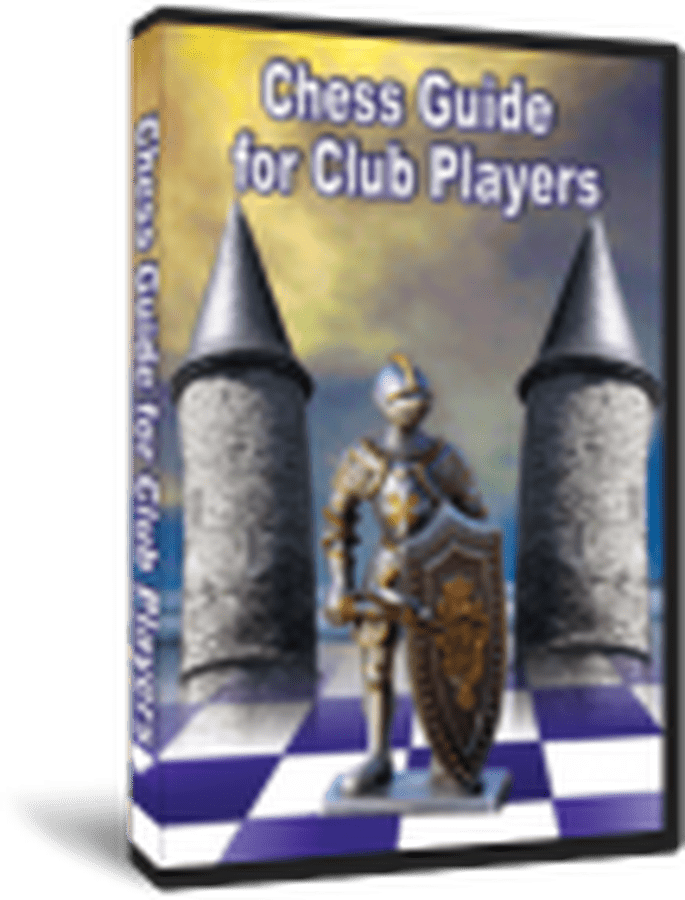| Nivå | B-D |
| Utgivelsesdato | Mars 2012 |
| Pris | 310 NOK |
Chess Guide for Club Players
75 leksjoner med 400 partieksempler og 200 øvingsoppgaver i tillegg. Denne CDen er som en innholdsrik bok med sjakkpartier som lærerike eksempler på ulike temaer for å øke spillestyrken fra 1100, 1500 eller 1900 og litt videre... Den passer på at brikkene står riktig i alle varianter.
Nivået er ikke direkte lavt, så det vil være enklest å komme i gang for spillere med basiskunnskaper tilsvarende minst rating cirka 1200.
Informasjon fra utgiveren:
This is a course for club players based on a textbook by a distinguished Russian chess trainer Victor Golenishchev. The source material is supplemented with examples of play by lead chess players from the latest major contests and is organized in chess lessons. The course is designed for 1 year and contains 75 lessons, including theoretical material and practical exercises. The theoretical part includes more than 400 examples of play. The practical part includes more than 200 exercises of varying difficulty.
The course allows you to: Study the theoretical material and test your knowledge See changes in your rating Keep track of your progress Play against computer starting with a set position Print exercises
Language: English.
System requirements: IBM-compatible PC, 256 Mb RAM, hard disk 100Mb, Windows XP/Vista/7/8.
CONTENT:
- Attacking the king in the center
- Attacking the king when both sides castle to the same flank
- The calculation mistakes
- Training the technique of calculation
- The "good" and the "bad" bishops
- The bishop is stronger than the knight
- The knight is stronger than the bishop
- The bishops of opposite color in the middlegame
- Bringing a piece out of play
- Exploiting the open and semi-open files
- Open and semi-open files and attacking the king
- An outpost on an open or semi-open file
- Fighting for an open file
- Strong pawn center
- Undermining the pawn center
- Pieces against the pawn center
- Pieces and pawns in the center
- The center's role in flank operations
- Two bishops in the middlegame
- Two bishops in the endgame
- Successful struggle against a bishop pair
- The weak points in opponent's camp
- The weakness of a complex of squares
- About some strong points
- The pawn weaknesses
- The doubled pawns
- A retarded pawn on a semi-open file
- A passed pawn
- Queen vs. two rooks
- Queen vs. Rook and a minor piece
- The queen vs. the three minor pieces
- Compensation for the queen
- Two rooks vs. three minor pieces
- Two minor pieces vs. Rook (with pawns)
- The rook vs. the minor piece and two pawns
- Compensation for the rook
- The minor piece vs. the three pawns
- Compensation for a minor piece
- The learning positions
- Geometry of the chessboard. The "shoulder charging" technique
- The endings with the passed pawns for both sides
- The breakthrough
- A better deployment of pawns
- The reserve tempi
- The activity of the king
- Obtaining the pawn endgame as a method of realization of a material or a positional advantage
- About the study composition. Some study ideas in practice
- Learning positions
- Control of the seventh rank
- Using the open file
- The endgames with the passed pawns
- The activity in the rook endings
- Exploiting the pawn weaknesses
- Some resources of the defense
- Realization of a material advantage
- Realization of a positional advantage
- Some rook studies
| Type | CD |
| Språk | Engelsk |

